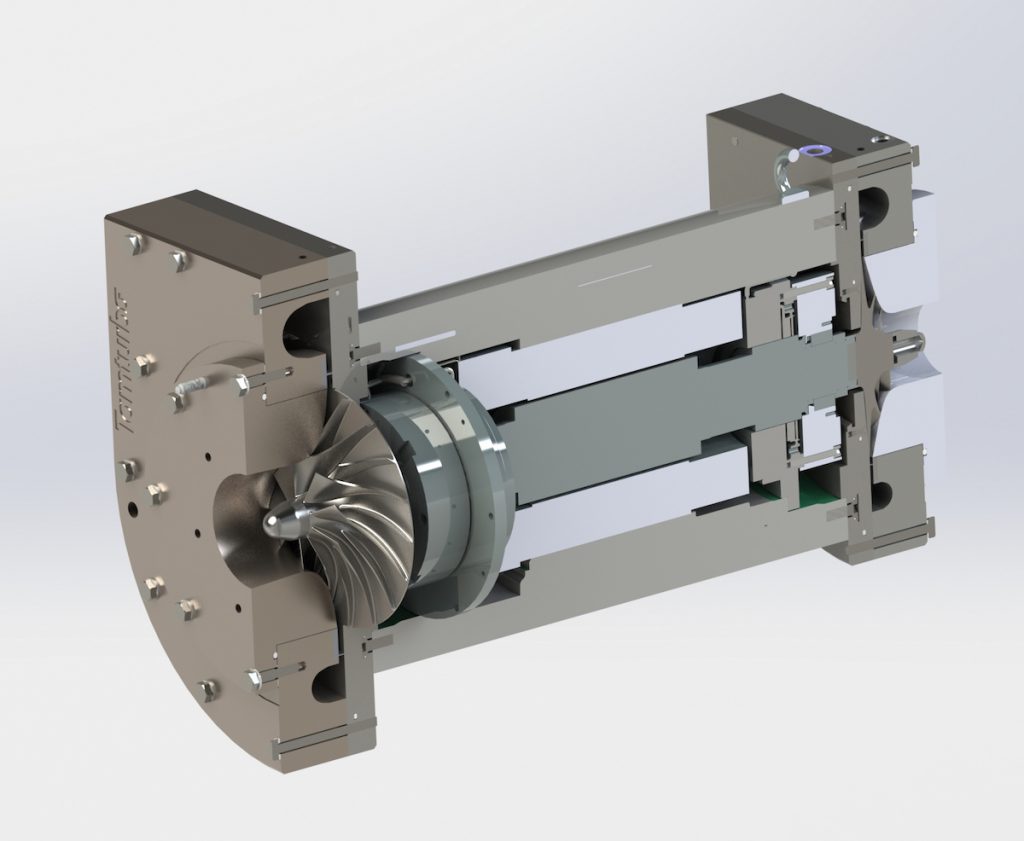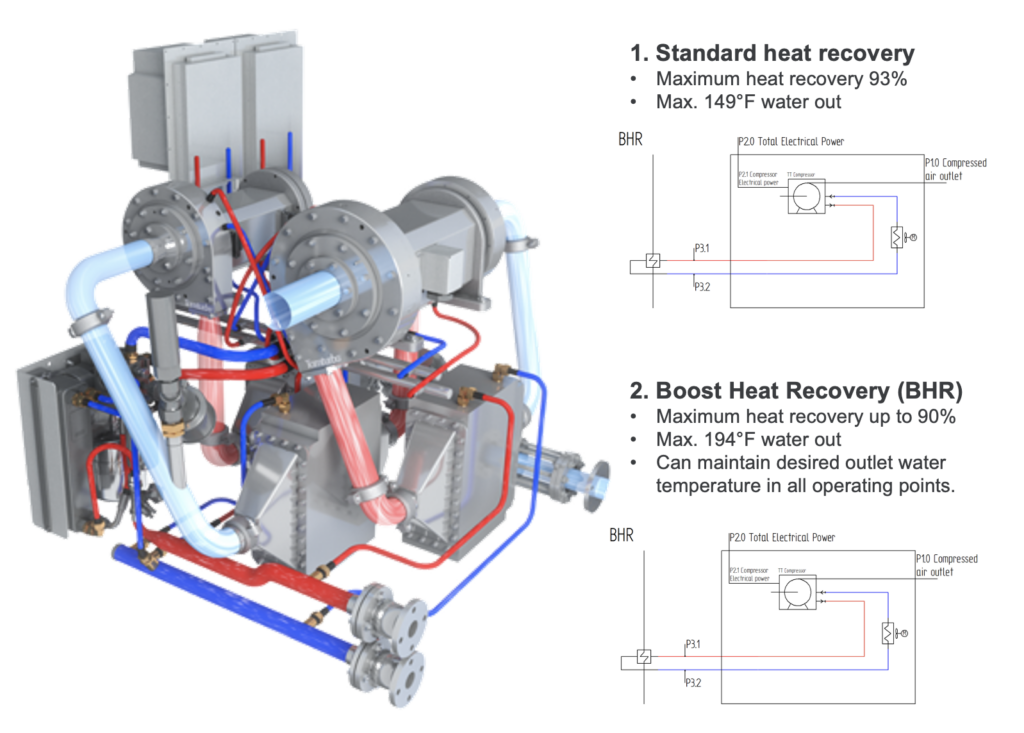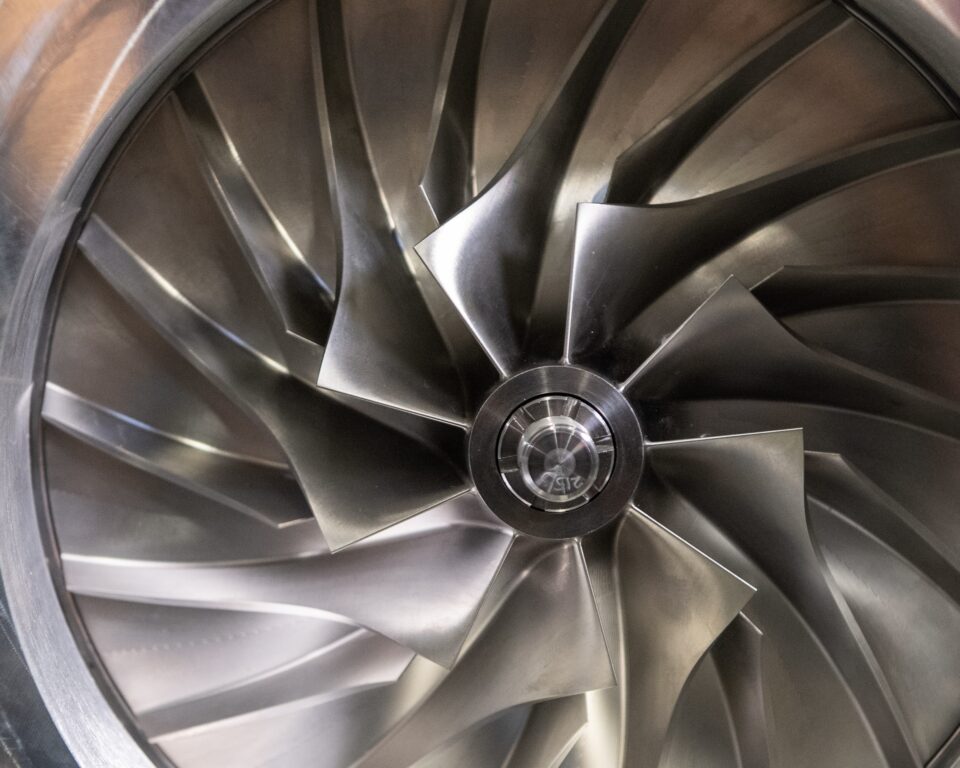The Lifecycle of Air Compressors: Uncovering the Truth
Did you know that the biggest part of the total cost of owning an industrial air compressor is not easy to see? Operating costs of an air compressor is typically split to three main parts: energy cost, maintenance and service expenses, and the initial purchase cost. The purchasing and maintenance costs are roughly the same size, at 12 to 14% and 10 to 12%, respectively. So, it’s clear that energy expenses make up a significant portion, up to 75 to 80% of the total cost over the compressor’s lifetime.
While procurement decisions are often made by the purchasing department, it’s important to note that the financial responsibilities, especially for energy and maintenance costs, affect the budgets of operations and manufacturing. Paradoxically, while the economically useful life of a large air compressors, those of 150kw (200hp) and larger is 15 to 20 years and even longer, payback calculations are done for much shorter periods. Return on investment (ROI) calculations are typically calculated over 2-to-3-year period, occasionally extending to five years, but rarely going beyond a decade.
This difference is that in the early years of operation, some technologies may not see substantial cost increases due to maintenance and servicing. However, when comparing costs over a 5 to 10-year period, these expenses become more substantial. As a result, the actual cost of ownership rises significantly after the initial five years, which is an important factor to consider in procurement decisions. Let’s take a bit of a deeper dive into the subject.
Geopolitical Energy Shocks: Impact on Costs and Budgets
Undoubtedly, recent geopolitical events have had a negative impact on energy costs, including both electricity and natural gas. Europe, especially countries like Germany, faced the worst of this surge, with power costs skyrocketing by an astonishing 500% in 2022. In North America, which is not as connected to Europe’s energy markets, the increases have been relatively mild, at around 7.5%. However, for a country that has maintained an annual inflation rate of 2% or less for the past 10 to 15 years, this still represents a significant increase.
These higher energy costs directly affect the operating expenses of equipment like compressors. While 7.5% might seem small compared to the massive 500%, its impact is substantial because it adds to the 80% of the total cost associated with owning and operating such equipment. Consequently, it has a significant influence on budget considerations.
Evaluating Compressor Efficiency Over Time: A Closer Look at Oil-Free Technology
Efficiency is a crucial factor in air compressors, often called the energy efficiency of the compressor. These machines are vital in virtually all industries, using electricity or natural gas to convert energy into compressed air, which powers a range of tools and equipment. The efficiency of air compressors has a direct and significant impact on a company’s finances, affecting energy costs and operational performance.
The Zero-Hour Performance Illusion
Compressor data sheets are essential for evaluating and buying air compressors. They provide valuable information about a compressor’s performance, including details like power consumption, output capacity, and overall efficiency. When you buy a new air compressor (of the old technology), it typically runs at its best efficiency. Manufacturers and sellers proudly showcase this “zero-hour performance” to potential buyers. It’s like a snapshot of the compressor’s abilities under perfect conditions, and it can be quite impressive. It’s important to understand that as the data sheets primarily showcase the compressor’s performance at the time of purchase, i.e. the zero-hour performance data, they don’t take into account the fact that the efficiency of “oil-free” compressors with old technology declines over time and that the initial peak efficiency rarely lasts in the long run.
The Deterioration of Efficiency
As traditional “oil-free” air compressors get older and accumulate operating hours, their efficiency declines. This decrease happens for various reasons, mostly from the wear of compressor rotor coating as well as wear and tear on gears and other parts, increased internal friction, and reduced effectiveness of sealing mechanisms.
Traditional ”oil-free” air compressors have been popular in industries where avoiding oil contamination is crucial. They use different methods to lubricate and cool their components without using oil. However, these technologies are not immune to a decrease in efficiency over time, Let’s explore why traditional ”oil-free” compressors often see a drop in efficiency.
In the world of oil-free air compressors, the screw elements coated with materials like Teflon experience wear as they accumulate operational hours. Yet, what often goes unnoticed is how their efficiency changes over time. As these coatings deteriorate, compressors encounter more internal friction, increased wear, and reduced overall efficiency. While data sheets readily showcase peak efficiency at the point of purchase, they hide the gradual loss of efficiency that these compressors go through.
While efficiency data sheets offer valuable insights into compressor performance when they’re new, it’s crucial for businesses to understand that this initial performance doesn’t reflect long-term efficiency. Recognizing how efficiency changes over time is essential for preserving profitability and ensuring a productive and cost-effective operation.
In the realm of traditional “oil-free” air compression, a significant practice plays a crucial role in Total Cost of Ownership (TCO) of these compressors: periodic rebuilds. Depending on usage, this essential procedure typically occurs between five and eight years of operation. What’s noteworthy is the economic impact of these rebuilds, making up roughly 60% of the initial compressor package cost. Over its lifetime, a compressor goes through this process two or three times, presenting a remarkable financial advantage.
Efficiency Evolution in Oil-Free Air Compressors: The Tamturbo® Advantage
Efficiency is crucial for any industrial operation, and in the world of air compressors, Tamturbo stands out as a game-changer. Unlike traditional ”oil-free” air compressors that become less efficient with age, Tamturbo compressors maintain consistent efficiency throughout their entire lifespan. This innovation has transformed the compressed air industry, offering businesses a dependable, cost-efficient, and sustainable solution for their compressed air requirements. And we cannot forget that Tamturbo is the only oil-free compressor which is also 100% free of oil – there is no oil in the compressor. At all! Let’s delve into how and why Tamturbo compressors maintain this steady efficiency over time.
Tamturbo compressors are the result of advanced technology and innovative design. They rely on a groundbreaking concept called Touch-Free™ air compression. This technology eliminates the need for traditional oil lubrication, a significant factor behind efficiency decline in traditional compressors. Here’s how Tamturbo achieves this constant efficiency:
High-Efficiency Motors: Tamturbo compressors use advanced Permanent Magnet Synchronous Motors (PMSM). These motors offer precise control of the compression process, ensuring optimal performance and energy savings.
Magnetic Bearings: Instead of regular mechanical bearings, Tamturbo compressors employ Active Magnetic Bearings (AMB). These bearings make the compressor rotor float Touch-Free™ without any contact, eliminating friction and wear, which are common causes of efficiency loss.With AMBs, critical parts rotate in their Mass Center which means compressors are self-dampening and do not vibrate at all.
Variable Speed Drive: All Tamturbo compressors come with Variable Speed Drive (VSD) technology. This allows them to adjust to changing air demand, maintaining peak efficiency regardless of the workload.
No Friction Surfaces: Unlike traditional compressors with parts lubricated by oil, Tamturbo Touch-Free™ compressors lack surfaces that generate heat and wear over time. This absence of wear and tear helps maintain their consistent efficiency.

The Key Advantages of Constant Efficiency
Energy Savings: Tamturbo compressors’ consistent efficiency leads to substantial energy savings, allowing businesses to lower their electricity expenses while maintaining high productivity.
Reduced Maintenance: Thanks to fewer moving parts and no need for oil changes, Tamturbo compressors require significantly less maintenance, which results in substantially lower operational costs.
Sustainability: Consistent efficiency leads to reduced energy consumption, helping industrial operations decrease their carbon footprint and meet sustainability goals.
Longevity: Tamturbo compressors are built for durability. Their steady efficiency extends their operational lifespan, providing businesses with a more significant return on investment.
For businesses aiming to optimize their compressed air systems, reduce energy consumption, and cut maintenance costs, Tamturbo compressors offer transformative technology. In an era where efficiency and sustainability are paramount, Tamturbo stands as an innovator reshaping the future of industrial air compression.
Critical Insights into Oil-Injected Compressor Efficiency Over Time and Part-Load Performance
Oil-injected screw compressors have been known for their efficiency, outperforming many oil-free technologies. However, one aspect often overlooked is how their efficiency changes over time. While you can find data sheets online, they typically highlight the performance when the compressor is new, hiding the gradual efficiency decline that these compressors undergo.
A crucial factor contributing to this decline is the saturation of oil separator elements, which collect airborne particles attached to oil droplets. As these elements fill up, pressure loss increases, leading to higher energy consumption and a drop in overall efficiency. Furthermore, the control mechanisms used in oil-injected compressors can vary significantly, affecting how efficiently they operate. Notably, part load efficiency is significantly lower than the nominal efficiency values published in data sheets.
Understanding these details is important for businesses that rely on oil-injected compressors to make informed decisions about maintenance, energy use, and overall operational efficiency.
When determining the right size of compressors for compressed air needs, companies often focus on maximum capacity, which places an emphasis on nominal or maximum efficiency. However, many oil-injected screw compressors, especially those equipped with alpha controls, display what’s known as “low no-load” characteristics. They may have impressive nominal efficiency but fall short in part-load situations.
Understanding this distinction is crucial because industrial compressors typically run at an average load of about 60% or slightly higher, with most usage falling within the 50% to 80% compressor capacity range. This makes part-load efficiency the most relevant metric when considering the total cost of ownership from an energy perspective.
Older compressor technologies were designed for nominal loads, whereas newer innovations, like Tamturbo, prioritize part-load efficiency. This approach aligns better with the real-world operational demands of today’s industries with the highest overall efficiency and thus, lower energy costs.
Harnessing Heat Recovery: A Green Solution for Energy Efficiency
In the constantly changing world of energy efficiency and sustainability, the idea of energy recovery and its substantial influence on reducing energy consumption and carbon footprint is gaining considerable interest.

The Heat Creation Dilemma
When air gets compressed, the molecules in the air collide, creating heat. Interestingly, the more you compress air, the more heat it produces. Surprisingly, a massive 94% of the energy used in the compression process turns into heat, which is distributed within the gas and the components at work. Only a minimal 4% stays in the air itself. Historically, this surplus heat was released into the environment through cooling systems, leading to a substantial energy waste.
Newer Technologies: A Paradigm Shift
But there’s a big change happening now. With Tamturbo® technology, we can now recover a most of the energy that used to go to waste. Tamturbo compressors can return up to 90% of the input energy from electricity used for air compression from useful heat in the cooling water. This recovered (thermal) energy can be used for many things, like heating process, washdown or domestic water and heating buildings. This means substantial savings in use or other energy utilities electricity, natural gas, or diesel fuel.
The Unique Value of Tamturbo Energy Recovery
What sets Tamturbo apart is its capacity to capture high-temperature heat, which is more valuable than lower-temperature options. While some technologies struggle to water temperature beyond 50-60°C, Tamturbo can provide water temperatures as high as 90°C. This hotter heat has mode added value and can be used in a wider variety of industrial applications, making it more economically valuable.

Future Outlook
In a world where energy costs keep going up, investing in efficient technologies like Tamturbo compressors with heat recovery is a smart move. The savings from lower energy costs and reduced carbon emissions can significantly boost a company’s profits. While these newer technologies might require a slightly higher initial investment, their lower overall cost over their lifespan makes them a compelling choice.

